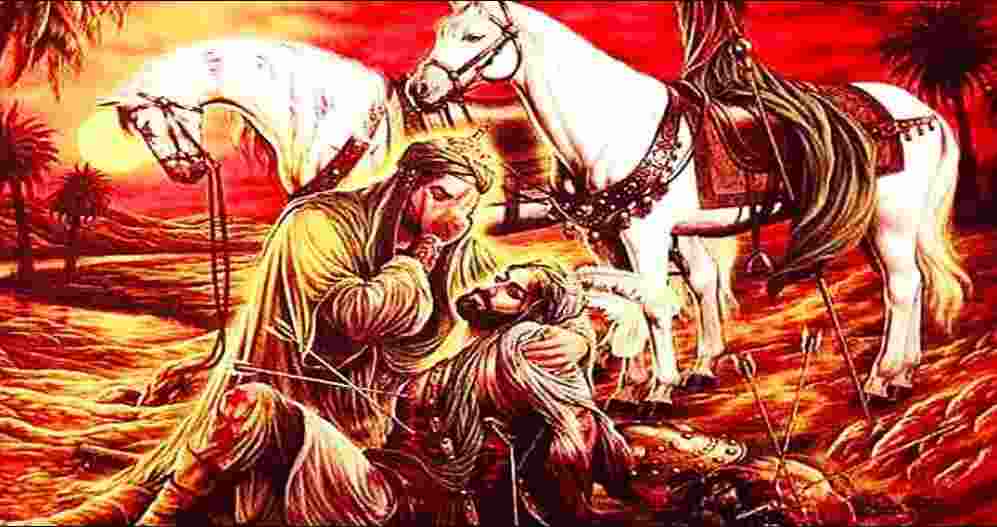
Who Is A Dutt/Datt?
One of India’s four or five main martial-Brahmin clans is the Mohyals, of whom the Dutts are a subclan. The other martial Brahmin clans include the Anavil/Desai of Gujarat, the Namboodri of Kerala, and the Tyagi of Western UP-Haryana. Typically, the Bhoomihar of Bihar, Orissa, and Eastern UP is regarded as the fifth clan. Since the time of Shri Parshuram, the warrior Brahmin mentioned in the Ramayan, these five dominant Brahmin clans have not held priestly positions; instead, they have only served as military generals, inspectors general of police, landowners, and frequently as sûbâdârs (Governors/Chancellors) of provinces (soobâ: a group of villages).
There are seven subclans of the Mohyals. Bhimwal, Bali, Lau, Vaid, Chhibber, and Mohan are the other six clans.
Ancestory
Dutts are Saraswat
Gotra – Bhardwaj
The Dutts are Rishi Bharadwaj’s offspring. During the British era of control in India, Dutts/Datts were categorized as a Martial Race.
Descendants Of Ashvathama
- Intriguingly, Munshi Prem Chand mentioned that the Hindus who fought and gave their lives in the holy war of Karbala are thought to be the descendants of Ashvathama in the Preface of his famous historical novel, titled Karbala, published in 1924 in Lucknow. This demonstrates their relationship to the Dutts, who view Ashvathama as a clan ancestor.
Porus : The Earliest Mention Of The Dutts
Ruler Porus, who Alexander vanquished, came from a warrior-Brahmin clan, as were Dahir/Darius, the last Hindu king of Sindh, and the final Hindu Shahi kings of Afghanistan. These warrior-Brahmin clans are thought to have left behind the seven Mohyal clans. The Dutts inside them asserts Porus as their ancestor.
No Indian source is aware of any information concerning King Porus. He is mostly mentioned in Greek historical documents. However, the earliest independent (non-Brahmin) confirmation of this fact comes from the Jammu Vanshawali (genealogical table or pedigree tree). (Histories are not Vanshawalis. They are lists of every member of a specific clan or the kings of a specific country, along with some background information on the ancestry of the clan’s first member.
A few centuries before Alexander, Jammu was undoubtedly annexed by invaders from Gandhara, Takshashila, and Sakal (Sialkot). The Dutts were these intruders. Till Alexander’s invasion, Jammu was a part of the Dutts’ empire, which was based in Takshashila and Gandhara. The Dutts may have been a Persian ethnic group. They in turn were ruled by the Achaemenians of Persia.
The leading historians of Jammu, Charak, and Billawaria (Rajput, not Dutt), wrote that “The seventh ruler of the dynasty, Ajay Sinh, seems to have settled at Jammu.” He was linked to Porus, who in the Jammu ancestry was known as Raja Puru Sen. Additionally, it mentions Goti-Pani as the name of Porus’s capital, which is something that no other source does. While battling Alexander on Porus’ side, Ajay Sinh was killed.
Hussaini Brahmans

- In the Battle of Karbala, the Dutt family’s ancestors fought alongside Imam Hussein (RA) (Iraq). To commemorate the sacrifices made by their forefathers who fought alongside Imam Hussein in the Battle of Karbala, their community continues to mark Muharram alongside Muslims. Since the battle of Karbala in 680 AD, according to the Punjabi Brahmin immigrants, this community of about 500 (or 1400) persons has adopted the prefix “hussaini” and refers to themselves as the Hussaini Brahmins.
Battle Of Karbala

- When the Karbala War was raging (Oct. 680 AD), due to his intimate ties to the Prophet Mohammed’s family, Rahab Sidh Dutt, a potentate of the Dutt sect, enjoyed great respect throughout Arabia (pbuh). Rahab fought alongside Imam Hussain (RA) in the holy war and gave the life of seven of his sons (called Sahas Rai, Haras Rai, Sher Khan, Rai Pun, Ram Singh, Dharoo, and Poroo) in the gruesome conflict.
1. The events leading to the battle of Karbala:
Following the passing of Mohammed (SAW), the Righteous Caliphs Hz. Abu Bakr (RA), Hz. Omar (RA), and Hz. Osman succeeded him (RA). He had matrimonial ties to all three of them. Hz. Osman was murdered. The Prophet’s son-in-law and first cousin, Hazrat Ali ibn Abu Talib (RA), who was married to Bibi Fatima Zahira (RA), the Prophet’s sole surviving child and the third daughter, succeeded him as the fourth Righteous Caliph after the Prophet’s passing.
Strong opposition to Hz. Ali’s leadership came from Amir Moavia, a well-known Hz. Osman disciple. His mausoleum, which has a golden dome and is located in the adjacent town of Najaf, is where he killed him after a five-year, gruelling battle (Iraq).
Following Hz. Ali’s murder, Moavia seized the Caliphate and turned the Islamic state into a kingdom. His renowned son Yazid succeeded him as ruler after his death. However, Imam Hassan (RA) and Imam Hussain, two of Hazrat Ali’s successors, were the legitimate candidates for the Caliphate. While Hassan relinquished his claim to the throne and eventually passed away from what was thought to be poisoning, his younger brother Imam Hussain, who had been living in seclusion in Medina up until that point, emerged and confronted Yazid ibn Muawjyah (the new caliph).. The massacre that occurred in Karbala, which is located 102 kilometres south of Baghdad, on October 10, 680 AD, was caused by their stalemate war.
2. The Mohyals Brahmans/ The Dutt family of Arabia:
At the time of the Karbala, there were 1,400 Hussaini Brahmins living in Baghdad alone (or at least 500). Sidh Viyog Datt, a descendant of Rahab, was awarded the title of Sultan and settled in Arabia (then known as Iraq). He was a grizzled and determined combatant. He also went by the name Mir Sidhani. He was a Brahma worshipper. He was the prodigal son of the saint and savant Sidh Jhoja (Vaj), who lived in Arabia (Iraq) circa 600 AD. Some historians claim that Imam Hussain bestowed the title of Sultan onto Rahab Dutt after realising her devotion for him. This account claims that well before the war and martyrdom at Karbala, Rahab’s clan took on the appellation “Hussaini Brahmin,” symbolising their strong relationship with Imam Hussain on the one hand and their status as Hindu Brahmins on the other. At the time of the Battle of Camels, which was fought close to Basra, Hazrat Ali had entrusted the regiment of the brave Dutts with the public exchequer. (This occurred long before the incident in Karbala.) Hindu Saraswat Brahmin Rahab Sidh Dutt, a potentate of the Dutt sect, was well-respected in Arabia and had close ties to the family of the Prophet Muhammad.
They were among the 200 men and women that accompanied Hussain on his long journey from Medina to Karbala, where he enjoyed a huge and devoted following. They included 72 members of his family (40 on foot and 32 on horseback). He travelled to Kufa to assist the locals who had invited him to protect them from the oppressive Caliphate. Imam Hussain’s caravan arrived in Karbala, which lies on the Euphrates River’s bank and is surrounded by a harsh desert, after 18 days, or on the second day of Muharrum. When a 30,000-strong force sent by Yazid from Mecca and other locations attacked them on the seventh day of Muharrum, chaos ensued. To guarantee that not a drop of water reached the Hussain’s parched innocents, 6,000 soldiers stood to watch along the riverbank. On the tenth day of Muharram in 680 AD, Karbala witnessed the Battle of Karbala. Hussain ibn Ali’s supporters and family members stood on one side, and an army unit from Yazid I’s (the Umayyad Caliph) forces stood on the other. Hussein was surrounded and denied food and water for days along with his friends and family. Sunnis and Shias finally split apart in Islam as a result of this conflict.
The brave Dutt’s joined forces with Amir Mukhtar, the leader of Imam Hussain’s supporters, and fought with remarkable bravery to seize and burn the fort of Koofa, the residence of Yazid governor Obaidullah, the Butcher. They banged the drums and shouted that they had avenged the innocent Hussain blood lost at Karbala after winning a decisive victory. The courageous Dutts and Shia followers of Imam Hussein did not lay down their weapons until they witnessed Yazid’s demise since he could only govern for 40 days. More than a dozen ballads (Kavits) written hundreds of years ago clearly and passionately recount the circumstances of the historic event.
It has been prohibited for Muslims to attempt to convert the Dutts to their faith ever since, according to M. J. Akbar. (However, even in Rajouri, some Hussaini Brahmin chiefs were killed and forced into conversion (India). The Hussaini Brahmins who were abandoned in Pakistan appear to have converted to Islam completely. They perform the Haj, among other things.
Migration To Afghanistan And India
The historian Sisir Kumar Mitra writes on page 183 of his book “The Vision of India” that numerous Hindus, especially Brahmins, lived in Arabia several centuries before the emergence of Islam. These people followed Hindu religious practices, which included worshipping Shiva and Makresha, the latter of which is said to be the source of the name Mecca. Yavanacharya, a well-known astrologer, was a member of one such Brahmin dynasty. The Arabs learned the Indian-developed sciences of mathematics, astrology, algebra, and decimal notation from these Brahmins. Rahab might have come from one of these clans. But now was the right time for his offspring to travel to the Indian subcontinent. After his seven sons were killed, Rahab reportedly fled to Afghanistan via Iran and Turkistan because he was so distraught. However, according to the oral chronicles of the Dutt family that have been passed down down the decades, Rahab was also assassinated on the 10th Ashoor, but before Imam Hussain. Indeed, Imam Hussain sung some blessings and prayers for the Dutts who had given their lives for him since he was so moved by the sacrifice of Rahab and his seven sons (all of whom passed away before Imam Hussain did). One of these gifts was that all Rahab Dutt’s offspring would have two naturally occurring lines flowing from left to right at Adam’s apple rather than the customary one.
Imam Hussain also granted the Dutts the ability to spit on the faces of persons who had smallpox to remove the pock marks they had left behind. Where was the query about whether there were any descendants of Rahab when all male Dutts had been slain? The Dutts’ own oral chronicles mention that one of Rahab’s murdered sons’ brides was carrying a boy child. He laid the groundwork for the current Dutt line. They made their way through Syria and Asia Minor, conquering Ghazni, Balkh, and Bukhara as they marched on from Harya Bandar (modern-day Basra on the banks of the Tigris River). They gathered in Sind after conquering Kandhar, and after crossing the Sind at Attock, they entered Punjab. Rahab’s later offspring had a large number of clans (Kabilas) in present-day Afghanistan and the NWFP. The clans were referred to as Mohda. According to the Bandobast Report of Gujarat by Mirza Azam Beg on page 422 and folk ballads, the Dutts may have made their way back to India about the year 1000 A.D. Some may have traveled as far as the sacred Pushkar in Rajasthan.
The native Mohyals gave the descendants of Rahab Dutt a warm welcome when they arrived in India. Many eventually made their homes close to Nankana Sahib in the modern-day Pakistani district of Sheikhupura. Many of Rahab Dutt’s direct descendants today go by last names such Dutt, Dutt, Sharma, and Bharadwaj.
Pir Wahun And Shiv Dutt
SHIV DUTT – The chief of the Dutts
PIR WAHUN – A chess player
Peer Wahun was well-known for his ability to constantly outperform the odds. He had made a wager that the loser would convert to Islam. He is reported to have done this to convert a sizable number of Hindus to Islam before coming up against Shiv Dutt. The Peer challenged Shiv Dutt to a game of chess. Shiv Dutt won three games in a row, winning the staked faiths of the Peer’s wife and two boys. Shiv Dutt, however, spared their lives out of pure generosity. Wahun made a solemn commitment to never again force any Hindu to convert to Islam after learning that one of Shiv Dutt’s forefathers had sacrificed his 7 sons for Muhammad in the battle of Karbala.
The Pir recited the well-known phrase Wah Dutt Sultan, Hindu ka Dharam Musalman ka Iman/Adha Hindu Adha Musalman at this time (Hail, O King Dutt for Thou are endowed with the Dharma of the Hindu and the Iman of the Muslim Half Hindu, half Muslim).
Shahr Banu
The Persian princess Shahr Banu, one of Imam Hussain’s brides, was related to Chandra Lekha or Mehr Banu, the wife of an Indian ruler by the name of Chandragupta. The Imam’s son Ali ibn Hussain immediately dispatched a letter to Chandragupta pleading with him for assistance in thwarting Yazid when it became apparent that the latter was hell-bent on killing the Imam. When Chandragupta learned of the message, he sent a sizable force to help the Imam in Iraq. But by the time they got there, the Imam (as well as Rahab and his sons) were dead.
They met a man named Mukhtar Saqaffi, a follower of the Imam, in the town of Kufa in modern-day Iraq. He made arrangements for them to stay in a particular area of the town known as Dair-i-Hindiya, or “the Indian district,” which is still called today. A few Dutt Brahmins banded together with Mukhtar Saqafi to avenge the Imam’s death, led by one Bhurya Dutt. While the others traveled back to India, they remained in Kufa. In order to preserve the legacy of their connections to the Imam, they established their own community, the Hussaini Brahmins, here.
The Shia’s Daily Prayer
- Muslim Ahmed Punjabi wrote in Jang Nama that it was prescribed for Shi’ites to mention Rahab in their daily prayers. One thousand four hundred Hussaini Brahmins were present in Baghdad alone at the time of the Karbala conflict. (The Dutts’ own oral histories, incidentally, inform them that Imam Hussain had ordained in this way before achieving his own martyrdom.)
Karmu Mai Dattani
The female Mohyal warrior. The female fighter Karmu Mai Duttani, just before Maharaja Ranjit Singh’s reign (1783–1839).
The Kanhaiya Misl in Amritsar was led by Saraswat Brahmin Jai Singh. When Maharaja Ranjit Singh assumed control of the region in 1799 with the capture of Lahore, he later combined the Misls into the army of the Sikh Kingdom of Punjab. Mai Karmo was chosen by Jai Singh to lead the Kanhaiya Misl branch in Katra. The brave woman held court in broad daylight in a bustling market plaza in Amritsar that is now recognized by her name, Karmo Ki Deod.
Hindu Participation In Muharram
Shia Muslims all over the world observe a day of sorrow on the tenth day of Muharram, the first month of the Islamic calendar, to remember the martyrdom of Hazrat Imam Hussain, his family, and his devotees. A group of Hindus took part in the Muharram march in this location with equal reverence. They assert that the Hussaini Brahmin sect is their lineage. Additionally, starting this year, they have carried on their ancestors’ centuries-old custom of crying in honour of the Karbala martyrs. The gathering, composed primarily of Bhumihars, marched barefoot from Bara Imambara in the Brahampur neighbourhood here while pounding their chests and screaming “Ya Hussain.” Additionally, they held a banner that expressed their admiration for the Imam and his martyrdom. Arun Kumar Sharma, convenor of the Bhumihar Brahmin Mahasabha, said, “Our forefathers too battled for Imam Hussain and gave their life in Karbala, and we are equally pained at the historical martyrdom.”
The group had established itself along the Euphrates River’s banks and was eventually known as Hussaini Brahmin. They afterwards [came] to India and adopted a variety of monikers, including Datts, Mohiyals, Tyagi’s, and many others. They also followed an unusual fusion of Hindu and Islamic customs. The lineage claimants participated in the Muharram ceremonies in this region of the nation for the first time in recent memory. Sunil Dutt, who passed away, was a Hussaini Brahmin and used to go to processions for Muharram.
Upendra Prasad Shahi declared, “The fight of Karbala was a conflict to defend humanity and faith,” as he marched in the parade in front of the group of young Shia teenagers who were cutting themselves on the chest and back with razors, small daggers, or blades attached to chains. We are honoured that our predecessors too gave their lives in sacrifice. According to legend, Rahab Sidh Datt gave his seven sons up in order to fight for Imam Hussain in the battle of Karbala. At the time of the Battle of Karbala, Rahab was the commander of a small group of career soldiers who were residing close to Baghdad.
Conclusion
- The Hussaini Brahmin sect is currently a rapidly disappearing group of people. Some people believe that the younger members of the clan are rejecting their ancestral history because it is shamefully different. Sharma, who has arduously sought out his caste people to aid in preserving this legacy, remarked that we should feel proud of this culture instead. We shared a blood connection with the Arab people before Islam, according to Sharma.
Top 13 Facts About Hussaini Brahmans
A Mohyal Brahmin (Saraswat Brahmin) clan from Punjab is known as Datt/Dutt. In the 900s, they reigned over portions of India’s Jammu region, including Jammu City’s Bahu neighbourhood (10th century AD). They are Brahmins, primarily Saraswat Brahmins, and they are a part of the Mohyal Brahmin group.
Rahab Singh Dutt, a Mohyal of upper caste and a Hindu, came all the way to Iran with his sons in order to fight alongside Imam Hussain, the Prophet Muhammad’s grandson, in the Karbala War.
Famous Hussaini Brahmin include Sunil Dutt and Sanjay Dutt, and Urdu writer Kashmiri Lal Zakir.
Hussaini Brahmins predominately lived in Sindh and Lahore before Partition. They were then made to relocate to cities like Pushkar, Allahabad, Delhi, and Pune. According to the Hussaini Brahmins, Rahib Dutt and his sons fought alongside the honourable Imam Hussain in Karbala.
Battle of Karbala, a brief military conflict fought on October 10, 680 (10th of Muharram, AH 61), in which an army dispatched by the Umayyad caliph Yazd I defeated and slaughtered a small group of people headed by al-Usayn ibn Al, the fourth caliph and grandson of the Prophet Muhammad.
Hussain, the son of Ali and Fatimah and the Islamic Prophet Muhammad’s grandson, lived in Arabia 1400 years ago. He is regarded as a significant figure in Islam since he belonged to the Ahl al-Bayt (the Prophet Muhammad’s household) and Ahl al-Kisa and was the third Shia Imam.
A Mohyal Brahmin group in the Punjab region known as Hussaini Brahmin has ties to both Islam and Hinduism. Although the Mohyal community consists of seven subclans with the names Bali, Bhimwal, Chhibber, Datt, Lau, Mohan, and Vaid, they have chosen non-Indic customs in keeping with Hindu heritage.
In Pakistan’s pre-independence territories, the Hussaini Brahmins were prosperous. Surnames like Mohan, Bali, Chibber, Dutt, Bakshi, Lav, Bimwal, and Jhingran are used to identify community members. They moved to India after the division and settled there in various locations.
But despite their contributions to the period of Islamic history that redefined itself, many Muslims in India and Pakistan choose to ignore them. They choose not to accept the Mohyal community’s claim that no Islamic author has made a similar claim.
The Mohyals’ involvement in the Karbala War is supported by Maulana Hasan Zafar Naqvi, a Shia preacher residing in Lahore, because of their cordial ties to Caliph Ali, the father of Imam Hussain.
The Hussaini Brahmins have managed to become a lost community despite having a long and varied history together and barely making an impact on society in terms of religion.
Both communities should remember Imam Hussain’s martyrdom and the sacrifice made by the Mohyals to preserve his honour when a Tajya procession in Muharram has the potential to spark a riot.
A community historically considered to be “half Hindu” and “half Muslim” has lost its vibrant tradition in the city of Amritsar.






